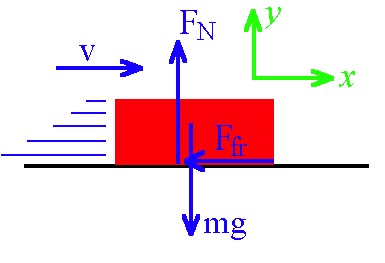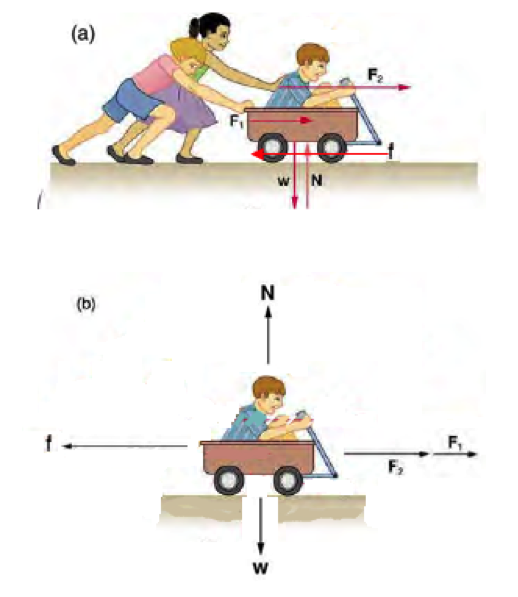| << Chapter < Page | Chapter >> Page > |
Now let’s think about another example. A man pushes a box across a floor at constant velocity by applying a force of +50 N (the positive sign indicates by convention that the direction of motion is to the right). What is the force of friction that opposes the motion? The force of friction must be −50 N. Why? According to Newton’s first law of motion, any object moving at constant velocity has no net external force acting upon it, which means that the sum of the forces acting on the object must be zero. The mathematical way to say that no net external force acts on an object is , or . So if the man applies +50 N of force, then the force of friction must be −50 N for the two forces to add up to zero (i.e., “cancel” each other). Whenever you encounter the phrase “at constant velocity,” Newton’s first law tells you that the net external force is zero.

The force of friction depends on two things: the coefficient of friction and the normal force. The coefficient of friction is a constant that depends on the nature of the surfaces in contact with one another. The normal force is the force exerted by a surface that pushes on an object in response to gravity pulling the object down. In equation form, the force of friction is
Recall from section one that a net external force acts from outside on the object of interest. A more precise definition is that it acts on the system of interest. A system is one or more objects that you choose to study. It is important to define the system at the beginning of a problem to figure out which forces are external and need to be considered and which are internal and can be ignored.
For example, in [link] (a), two children push a third child in a wagon at constant velocity. The system of interest is the wagon plus the small child shown in part b of the figure. The two children behind the wagon exert external forces on this system ( F 1 , F 2 ). Friction f acting at the axles of the wheels and at the surface where the wheels touch the ground is another external force acting on the system. Two more external forces act on the system: the weight W of the system pulling down and the normal force N of the ground pushing up. Notice that the wagon is not accelerating vertically, so Newton’s first law tells us that the normal force balances the weight. Because the wagon is moving forward at constant velocity, then the force of friction must have the same strength as the sum of the forces applied by the two children.


Notification Switch
Would you like to follow the 'Updated tutor hs physics content - legacy' conversation and receive update notifications?